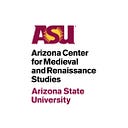Spectacles of the Arizona Book History Group
by Brandi K. Adams
Rare book rooms give us glimpses into pasts we may not have encountered otherwise. These pasts can be rather serious and weighty, but they can also provide joyous insight into a history of objects like glasses. While it is true that a quick internet search can tell you that they were a thirteenth-century Italian invention, what you may not immediately encounter is a wonderful print depicting early spectacles:
On this page from 1633, headed by a lively printer’s ornament replete with birds, insects, mollusks and what appears to be a bejeweled, bare-breasted Indigenous woman holding up an urn (more on that in a later post), a representation of a pair of glasses appears below capital roman letter type spelling out the word SPECTACLES. Within the object is a concrete poem, which reads:
Perspective
SPECTACLES
of
Especial Use,Now New-Polished
To discern,
The WORLDS
Vanities,
Levitie, & Brevatie.
The spectacles rest upon a stand made up of a catchy couplet printed to resemble a handwritten note:
These Glasses in indifferent lights,
Serve Old, & yong, & midle Sights.
While this couplet serves as a memorable definition of the object — particularly for those people seeing them (and perhaps using them!) for the first time — the spectacles and the poems can also be an apt metaphor for what is needed in rare book rooms: help with “indifferent” or many different “sights.” The concrete poem that makes up the spectacles also works as gentle instructions for readers as they peruse rare books. When working on a scholarly project, there is often pressure to sort through hundreds or even thousands of books and manuscripts to look for spectacles — that which is astounding, or eye-catching — whether it is the typographical or material evidence in a particular edition of a book, or the surprising contents of waste paper inserted into its binding.
Readers examining rare books should be able to work at their leisure using the metaphor of the above pair of spectacles to “discern” things, whether they are vanity, levity or brevity in the materials they are examining. In this way, readers can determine what elements of a given book (or other object) might be interesting to them.
Different readers will see and be invested in the above image and its various parts, whether it is the spectacles and their poem, the flora, fauna, or person located in the printers ornament; the line at the bottom of the page separating the spectacles from some other object or text, or the text from earlier pages that comes into view like a ghost lurking in the background. There is so much to see in a single page of a book or manuscript. Even after readers have “discerned” as much as possible in a rare book, it is also vital to spend time in conversation with one or more people about the book or image to see what they have noticed. This kind of work in book history and bibliography (the study of the technical features of books) tends to be a bit solitary, but more collaborators often help to clarify observations and test hypotheses and intuitions.
The newly formed Arizona Book History Group (AZBHG) hopes to provide more people interested in book history and bibliography the time to slowly examine a collection. In conjunction with the Phoenix Public Library’s Alfred Knight Collection, AZBHG will give readers the time to look at material of their choosing in a special collection of over 2,300 books and manuscripts. This surprisingly broad and deep collection of materials is under the care of Alex Mada, librarian and special collections manager. It encompasses early near eastern, medieval and early modern manuscripts and prints ranging from classics to poetry to drama to astronomy, as well as history and geography. For those interested in later books and manuscripts, the collection also has an impressive group of first edition novels from the eighteenth- century forward.
The mission of the AZBHG is twofold: to have as many different readers interact with these books as possible and to give readers the time to peruse these books with no set goal. We prioritize browsing, resting and meditating with materials in the Knight collection, a move counter to the demands and economics of most academic research, and in early modern bibliography and book history in particular — where it is often important to examine multiple instances of a book or an object quickly in order to come to some kind of conclusion about it.
We do not believe that one should know what one is looking for before arriving here. Instead, we embrace the theory of the spectacles, where readers are given time determine what is of interest to them. Of course, planned visits to look at specific items in the collection will be welcome, but we wish to encourage time and space with books, and then conversation afterwards.
In Febrary 2024, the AZBHG invited Zachary Lesser (UPenn), Aaron T. Pratt (Ransom Center), Claire M.L. Bourne (Penn State), and Tara Lyons (Illinois State) to explore the Alfred Knight Collection. They spent two mornings with the materials at the Barton Barr Library and each afternoon presented their findings to students, faculty and staff at the ASU Humanities Institue.
Our visitors, the inaugural AZBHG Fellows, shared incredible (and exciting) information about the material they examined. Their work has already radically changed how we understand the collection, not least in terms of the identity of the owner of one of the books… (watch this space!).
This experiment of an agendaless academic visit proved immediately valuable and successful — something that does not always happen in visits of this kind. However, as AZBHG continues to grow, we expect to have more people experience the joys and spectacles of rare books and help us to learn more about the Alfred Knight Collection. We hope you’ll join us.
Brandi K. Adams is an assistant professor of English at Arizona State University and a member of the Arizona Center for Medieval and Renaissance Studies. Her essays and reviews have been published in Shakespeare Quarterly, Shakespeare, Shakespeare Survey, Cahiers Élisabéthains, and Early Theatre, and in collections including Shakespeare/Text, The Oxford Handbook for the History of the Book, Arden of Faversham: A Critical Reader, and The Oxford Handbook of Shakespeare and Race. She is currently editing Merry Wives of Windsor with Jonathan Hope for Cambridge Shakespeare Editions, and she is working on her first monograph entitled Representations of Books and Readers in Early Modern English drama (1580–1640).

